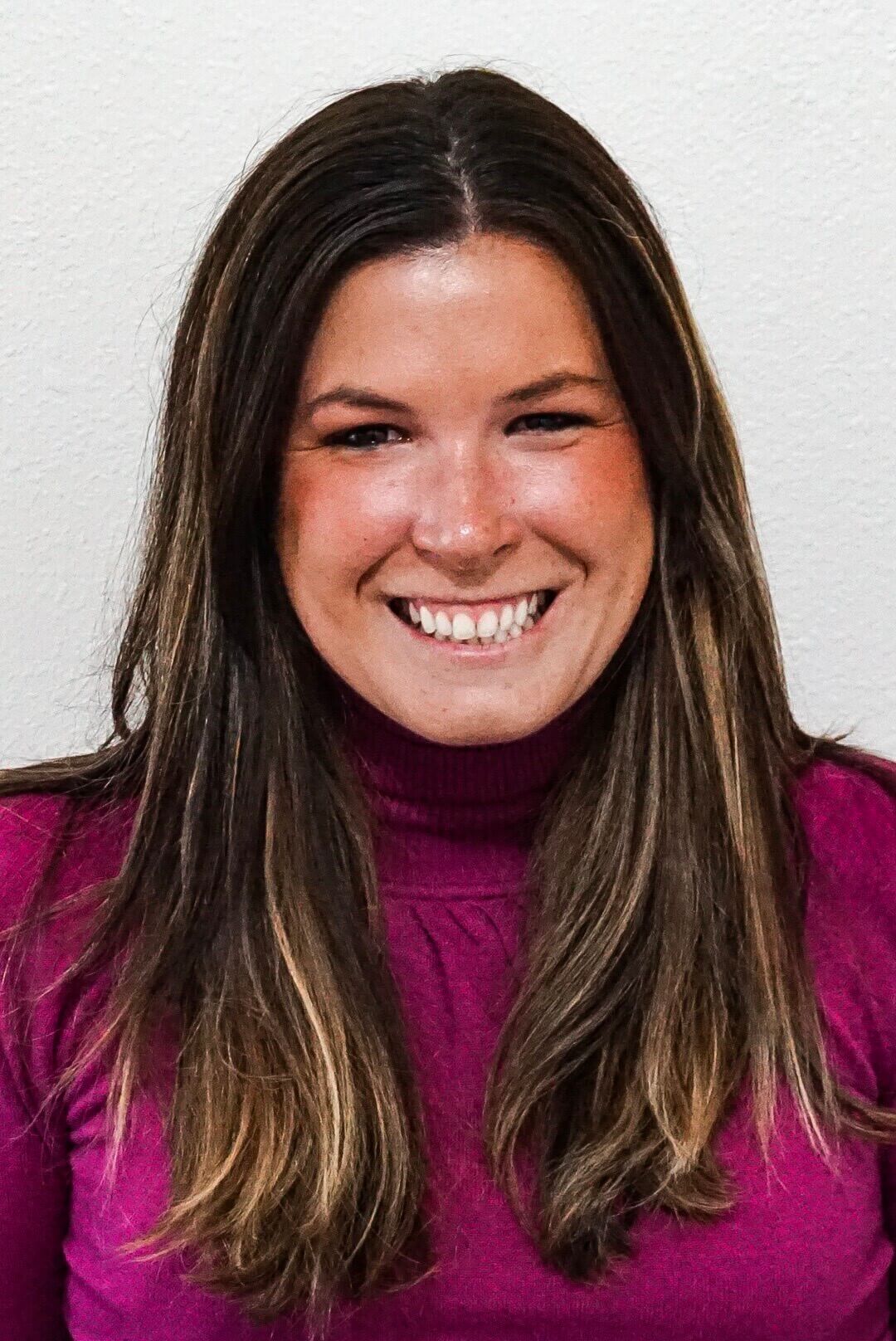Co-Occurring Disorders: Anxiety and Addiction



Stacy Mosel is a licensed social worker, psychotherapist, and substance abuse specialist. After receiving a Bachelor's degree in Music from the State University of New York at Stony Brook, she continued her studies at New York University, earning a Master's of Social Work degree in 2002.

Kristen Fuller, M.D., enjoys writing about evidence-based topics in the cutting-edge world of mental health and addiction medicine and contributes to medicine board education.




Stacy Mosel is a licensed social worker, psychotherapist, and substance abuse specialist. After receiving a Bachelor's degree in Music from the State University of New York at Stony Brook, she continued her studies at New York University, earning a Master's of Social Work degree in 2002.

Kristen Fuller, M.D., enjoys writing about evidence-based topics in the cutting-edge world of mental health and addiction medicine and contributes to medicine board education.
Anxiety disorders are some of the most common mental health disorders that co-occur with addiction.1 In fact, the 2023 National Survey on Drug Use and Health(NSDUH) reports that 20.4 million people ages 18 and older had both a mental illness and a SUD in the previous year.2
This article will take a deeper dive into anxiety disorders, signs and possible causes of them, their relationship with substance use disorders, and what treatment options are available.
What Are Anxiety Disorders?
Anxiety disorders are a category of mental health disorders characterized by feelings of worry, excessive fear, and related disturbances that can interfere with one’s daily life.3,4 Generally speaking, a person with an anxiety disorder overestimates the amount of danger that is present in situations they fear.4
Different types of anxiety disorders can have different symptoms, which vary based on the types of situations or causes of anxiety.4 The causes of these disorders aren’t totally understood, but a combination of factors, including genetic, environmental, psychological, and developmental influences, are believed to play a role.5
In the U.S., anxiety disorders and feelings of worry are relatively common. According to the Centers for Disease Control and Prevention (CDC), 11.7% of the population experiences regular feelings of worry, nervousness, or anxiety.6 The American Psychiatric Association (APA) reports that anxiety disorders affect nearly 30% of adults at some point in their lives.5
Types of Anxiety Disorders
There are different types of anxiety disorders, which include:
- Generalized anxiety disorder (GAD). This involves excessive and persistent worry. It can cause symptoms such as irritability, muscle tension, sleep problems, and unexplained headaches, aches, and pains.3 Around 2% of the population experiences GAD at any given point.5
- Panic disorder. People with panic disorder experience recurrent panic attacks, which involve intense fear and accompanying physical symptoms such as heart palpitations, sweating, and chest tightness.3 Around 2% to 3% of the population experiences panic disorder in any given year.5
- Social anxiety disorder or social phobia. This involves fear and avoidance of situations where you may be judged or embarrassed, such as public places, parties, or school. It involves intense feelings of nervousness, self-consciousness, and worry in social situations. An estimated 7% of the population experiences SAD in any given year.5
- Specific phobias. This involves intense fear of a particular object, situation, or activity that is typically not harmful, such as fear of flying of fear or public speaking.5 An estimated 8% to 12% of the population experiences a specific phobia at any given point.5
- Agoraphobia. Agoraphobia is a specific phobia related to being in situations where you feel like you can’t escape. The fear is out of proportion to the actual situation.5 Around 1% to 2.9% of adolescents and adults experience agoraphobia in any given year.5
What Are the Signs of Anxiety Disorders?
Everyone experiences anxiety from time to time, as it can be a normal response to fear or stress. Normally, the anxiety subsides when the stressor/situation goes away, but if it persists, you may have an anxiety disorder.3
Each anxiety disorder has its own diagnostic criteria, but they all share fear and avoidance of situations or triggers that can worsen symptoms.5 Only a qualified mental health practitioner can diagnose anxiety disorders because they are specially trained to do so using the Diagnostic and statistical manual of mental disorders (DSM-5). However, if you or a loved one are struggling with anxiety, it can be helpful to know some of the diagnostic criteria, including:4
- Excessive anxiety and worry occurring more days than not for at least 6 months.
- Difficulty controlling the worry.
- Restlessness or feeling keyed up or on edge.
- Being easily fatigued.
- Difficulty concentrating or feeling like your mind goes blank.
- Irritability.
- Muscle tension.
- Sleep disturbances (such as difficulty falling or staying asleep) or restless, unsatisfying sleep.
What Causes Anxiety Disorders?
Anxiety disorders don’t always have a clear cause. For example, some people with GAD often say they’ve felt anxious and nervous their whole lives.4 Researchers know that different risk factors can play a role in the development of anxiety disorders. These include:
- Temperament, such as naturally being more inhibited or shy.3,4
- Genetics, such as a history of anxiety disorders in biological relatives.3
- Environmental factors, such as early exposure to stressful life events.3,7
Relationship Between Anxiety and Addiction
Anxiety and addiction commonly co-occur and can be related in different ways.7,8 The National Institute on Drug Abuse (NIDA) explains that three main factors can play a role, including:7
- Common risk factors that can increase the chances of developing both disorders.
- Mental illness that affects substance misuse.
- Substance misuse and addiction can affect mental health.
Anxiety and alcohol use disorders (or other SUDs) can each affect the course and outcome of the other.9 People who have anxiety disorders and SUDs tend to experience worse outcomes than people who have one disorder or the other.8
People with mental health conditions like anxiety disorders sometimes self-medicate with substances as a way of dealing with their symptoms.7,9 While this may temporarily ease symptoms, it can also worsen symptoms in the long run and lead to the development of a SUD.7,9
Medication for Anxiety
Medication can play an important role in the treatment of anxiety disorders, and when combined with psychotherapy, can be more effective at reducing anxiety symptoms and improving functioning than using just medication or just psychotherapy.8 People in recovery from SUDs should speak to their doctors and counselors about the potential risks and benefits of using medication.8
Different disorders can cause various symptoms, which may necessitate the use of a specific medication. While medication does not cure anxiety disorders, it can ease symptoms.3
Medications commonly used to treat anxiety include:
- Selective Serotonin Reuptake Inhibitors (SSRIs). These are antidepressants that regulate serotonin and can therefore help improve mood.3 Common types of SSRIs include citalopram, escitalopram, fluoxetine, paroxetine, and sertraline.
- Serotonin-Norepinephrine Reuptake Inhibitors (SNRIs). These are also antidepressants, but they regulate both serotonin and norepinephrine, chemicals that play a role in mood and stress.3 Common SNRIs include venlafaxine and duloxetine.
- Benzodiazepines. These are indicated for the short-term management of anxiety and as an add-on treatment in treatment-resistant anxiety disorders. This includes medications like alprazolam, clonazepam, diazepam, and lorazepam. They are very effective at treating acute anxiety symptoms, but have a very high addiction potential and therefore are only prescribed for very short periods of time and for specific anxiety disorders.3
- Tricyclic antidepressants. Due to the above-mentioned concerns about benzodiazepines, some doctors use tricyclic antidepressants, such as amitriptyline, imipramine, and nortriptyline, to treat anxiety. However, these medications can cause significant side effects such as constipation and orthostatic hypotension (low blood pressure when you stand up).
Treatment for Co-Occurring Anxiety and Addiction
Integrated, individualized treatment that addresses both the anxiety and the SUD is important to properly address the symptoms of both disorders and prevent relapse.7,10
Research has shown that integrated treatment is consistently superior compared to separate treatment of each diagnosis.7
Treating co-occurring disorders can sometimes be challenging for a variety of reasons. For example, people who have co-occurring disorders often demonstrate poorer treatment adherence and higher rates of treatment dropout than people without co-occurring mental illnesses.7 Furthermore, in the U.S., only around 18% of SUD treatment programs and 9% of mental health treatment facilities are able to treat co-occurring disorders.
Medication provided under a doctor’s supervision and behavioral therapies like cognitive-behavioral therapy (CBT) may help achieve more positive outcomes.8 Some studies have shown that therapies like CBT can safely and effectively reduce psychiatric and SUD symptoms in people with anxiety disorders.8 Due to concerns about people with SUDs developing dependence on anxiety medications, CBT may help minimize the use of medications.8
People with anxiety disorders may receive treatment for co-occurring disorders in inpatient rehabs or outpatient programs. An inpatient program means that you live onsite for the duration of treatment. An outpatient program means that you’ll live at home, but travel to a treatment center on a set schedule.
Regardless of the setting, it’s important to receive individualized treatment that considers your medical, psychological, social, vocational, and legal problems as well as your age, gender, ethnicity, and culture.10
Find Addiction and Anxiety Treatment Centers
If you or a loved one is ready to seek rehab for a substance use disorder, explore your options and reach out to a rehab center using our rehab directory tool today!
-
Substance Abuse and Mental Health Services Administration. (2024, March 29). Co-Occurring Disorders and Other Health Conditions. https://www.samhsa.gov/substance-use/treatment/co-occurring-disorders
-
Substance Abuse and Mental Health Services Administration. (2024). Key Substance Use and Mental Health Indicators in the United States: Results from the 2023 National Survey on Drug Use and Health. (HHS Publication No. PEP24-07-021, NSDUH Series H-59). Center for Behavioral Health Statistics and Quality, Substance Abuse and Mental Health Services Administration. https://www.samhsa.gov/data/sites/default/files/reports/rpt47095/National%20Report/National%20Report/2023-nsduh-annual-national.pdf
-
National Institute of Mental Health. (2022, April). Anxiety Disorders. https://www.nimh.nih.gov/health/topics/anxiety-disorders
-
American Psychiatric Association. (2021, June). What are Anxiety Disorders? . https://web.archive.org/web/20230122235432/https://www.psychiatry.org/patients-families/anxiety-disorders/what-are-anxiety-disorders
-
Centers for Disease Control and Prevention. (2024, October 2). Mental Health. https://www.cdc.gov/nchs/fastats/mental-health.htm
-
National Institute on Drug Abuse. (2020, April). Common Comorbidities with Substance Use Disorders Research Report. https://www.ncbi.nlm.nih.gov/books/NBK571451/
-
Substance Abuse and Mental Health Services Administration. (2020). Substance use disorder treatment for people with co-occurring disorders. Treatment Improvement Protocol (TIP) Series, No. 42. SAMHSA Publication No. PEP20-02-01-004. Rockville, MD: Substance Abuse and Mental Health Services Administration. https://store.samhsa.gov/sites/default/files/SAMHSA_Digital_Download/PEP20-02-01-004_Final_508.pdf
-
Turner, S., Mota, N., Bolton, J., & Sareen, J. (2018, July 12). Self-medication with alcohol or drugs for mood and anxiety disorders: A narrative review of the epidemiological literature. Depression and anxiety, 35(9), 851–860. https://www.ncbi.nlm.nih.gov/pmc/articles/PMC6175215/
-
National Institute on Drug Abuse. (2014, January). Principles of Drug Addiction Treatment: A Research-Based Guide (Third Edition). https://nida.nih.gov/sites/default/files/podat-3rdEd-508.pdf
Our Promise
How Is Recovery.com Different?
We believe everyone deserves access to accurate, unbiased information about mental health and recovery. That’s why we have a comprehensive set of treatment providers and don't charge for inclusion. Any center that meets our criteria can list for free. We do not and have never accepted fees for referring someone to a particular center. Providers who advertise with us must be verified by our Research Team and we clearly mark their status as advertisers.
Our goal is to help you choose the best path for your recovery. That begins with information you can trust.














